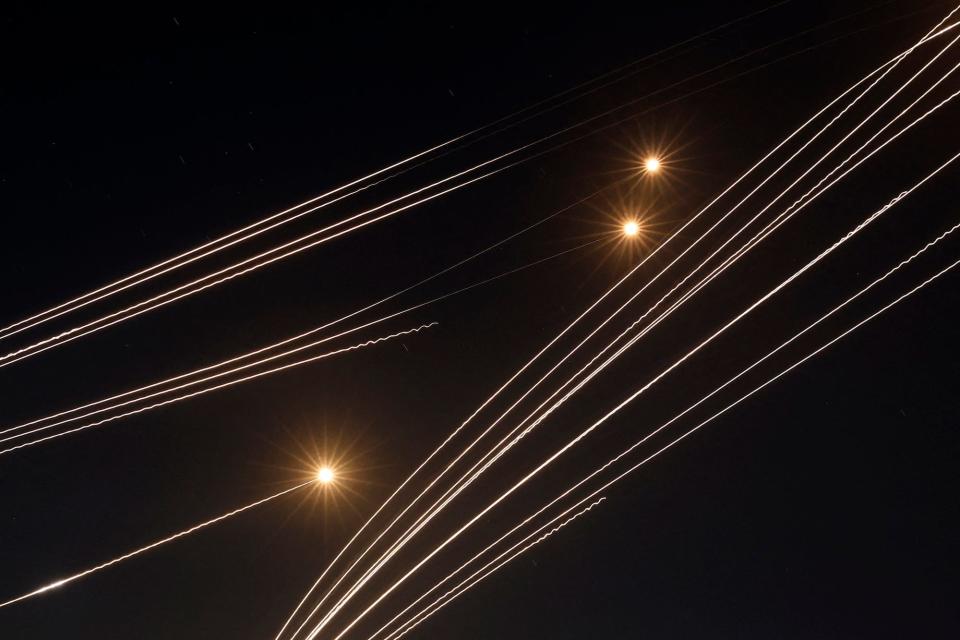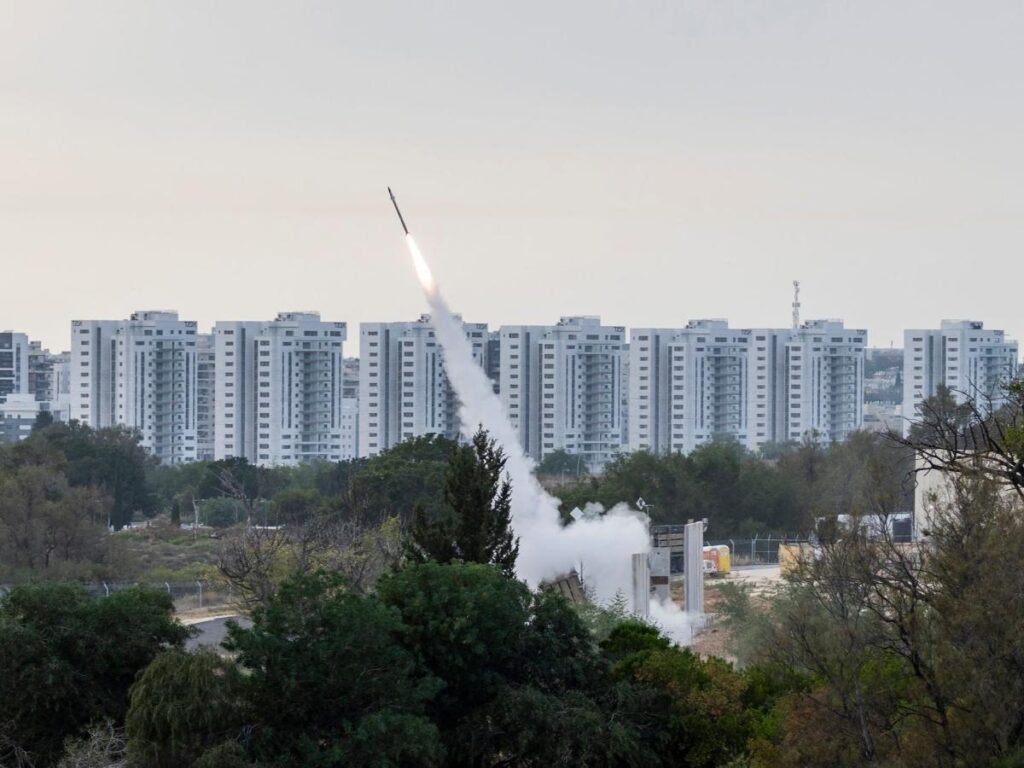-
Internal resistance nearly thwarted the development of Israel’s Iron Dome air defense system.
-
Some IDF leaders feared that missile defense would lead to a defensive mentality.
-
At the time, missile defense was often considered unfeasible, but that view has fundamentally changed.
Today, Israel has the most famous and tested missile defense systems in the world, including the legendary Iron domeBut resistance from the Israeli military had nearly destroyed these defenses decades earlier, offering a cautionary tale of the difficulties of developing weapons that might one day prove essential.
In the 2000s, the Israel Defense Forces decided that the best form of missile defense was a “counterforce” strategy to destroy enemy missiles before they could be fired, a new report says. report by the Royal United Services Institute, a British think tank, on the lessons of Israel’s missile defense program. The IDF’s “view of the threat was underpinned by the assumption that Israeli precision strikes could quickly reduce the number of incoming threats in a major conflict, even if they could not be eliminated entirely.”
Some IDF leaders feared that missile defense would lead to a defensive mentality, rather than taking the war to the enemy. But the problem with that came down to finding those missiles and launchers before they were fired. Hamas and Hezbollah hid their weapons in tunnels and in civilian areas, while targeting Iranian missiles was difficult because Iran is a thousand miles from Israel.
“A counterforce strike campaign can be efficient or fast, but rarely both,” warned Sidharth Kaushal, a RUSI researcher, and Brig. Gen. Ran Kochav, the former head of Israel’s air and missile defense system.
Israel’s Integrated Air and Missile Defense, or IAMD, is a layered system: Arrow-2 and Arrow-3 long range interceptors to destroy ballistic missiles while in space before they descend through the atmosphere, medium range interceptors David’s Sling Interceptors to hit short-range ballistic missiles and large artillery rockets, and the Iron Dome’s small rockets intercept short-range rockets, howitzer shells and mortar rounds.
Yet Israel’s military establishment — the Israel Defense Forces — refused to divert resources from traditional weapons, such as tanks and fighter jets, to missile defense when the idea was conceived in the 1980s. “Critics questioned the technical feasibility and cost of the system, and whether it would deliver the promised strategic benefits,” Kaushal and Kochav wrote. Indeed, there was similar criticism in the U.S. over whether President Ronald Reagan’s “Star Wars” missile defense would work.
IDF commanders recently achieved a victory on which they based their argument: Operation Mole Cricket 19 during the 1982 Lebanon War. Using drones and fighter jets, the Israeli Air Force destroyed 29 Syrian surface-to-air missile batteries in two hours without suffering any losses. If the IAF could do that with anti-aircraft missiles, why not with ballistic missile launchers?
But politicians such as Yitzhak Rabin, a former Israeli chief of the general staff, persisted in the 1990s, with the help of generous American funding that eased the IDF’s resource concerns. An Israeli-built missile defense system also became more desirable after Iraqi leader Saddam Hussein Scud ballistic missiles in Israel during the 1991 Gulf War: Israel had to rely on American-manned Patriot interceptor missiles stationed in Israel to stop the Scuds — barely one of the 40 Scuds was intercepted. Israel’s disappointment in the Patriot was one of the factors that prompted them to set up their own air defense.


Israel’s missile defense also evolved as threats changed. Originally, there was the Arrow missile system to intercept ballistic missiles. “The system achieved its first successful interception of a ballistic missile in 1990, marking a major technical milestone,” RUSI noted. “Despite successful testing, the Arrow project continued to face challenges, including technical problems, budget overruns and delays.”
But then came the rise of Hamas in Gaza And Hezbollah in Lebanon meant that Israel was threatened by short-range missiles and artillery that the high-altitude Arrow could not intercept. In 2011, Israel deployed Iron Dome, which has proven largely—but not entirely—successful in identifying and intercepting missiles before they hit populated areas.
But some continued to argue that the best defense was a good offense, which meant gaining some sort of control over the terrain from which rockets were fired or destroying the enemy’s ability to launch them. “Critics pointed out that while Iron Dome effectively mitigated the immediate threat of rocket attacks, it did not address the root causes of the conflict or provide a long-term solution to the security challenges Israel faced,” Kaushal and Kochav wrote. “Ultimately, the argument that air and missile defense introduced a Maginot mentality into the military was continually advanced,” citing the French defense lines who bypassed the Nazi armies at the start of World War II
From the 1960s to the 1980s, missile defense was often viewed as unachievablea quixotic attempt to essentially hit a bullet with another bullet. But technology has advanced to the point where missile defense is now seen as an indispensable capability. Israel’s missile defense system was put to its most severe test in April, when Iran launched hundreds of missiles and drones into Israel. The IDF claimed that about 99% were intercepted. But Iran had sent a telegram that an attack was coming, so Israel had time to prepare. Troops from several countries, including the US, Britain and Jordanalso helped intercept the Iranian attack.
Dozens of countries operate Patriot, S-300 and other air defense weapons that can shoot down missiles, planes and large drones. Ukraine in particular has gained a lot of experience in intercepting Russian missiles, including hypersonic missiles which Russia claimed were unstoppable.
Missile defense will always be difficult, not least because it is cheaper for an adversary to build more offensive missiles than it is for the defender to intercept them all. Integrated air and missile programs “are uniquely susceptible to delays and cost overruns, given the inherent complexity of the challenges they face,” Kaushal and Kochav warned. This problem is exacerbated when missile defenses like Israel’s must contend with multiple threats, including ballistic missiles, cruise missiles, drones and artillery rockets.
Ultimately, the virtue of missile defense may be that it is the least bad alternative. “The problem with counterarguments about the cost of air defense, then, is not that they are inherently wrong, but rather that in many cases there are few alternatives other than a politically untenable doctrine of preemption, particularly when a country lacks strategic depth,” Kaushal and Kochav wrote.
Michael Peck is a defense writer whose work has appeared in Forbes, Defense News, Foreign Policy magazine and other publications. He holds an MA in political science from Rutgers Univ. Follow him on Twitter And LinkedIn.
Read the original article at Company Insider







